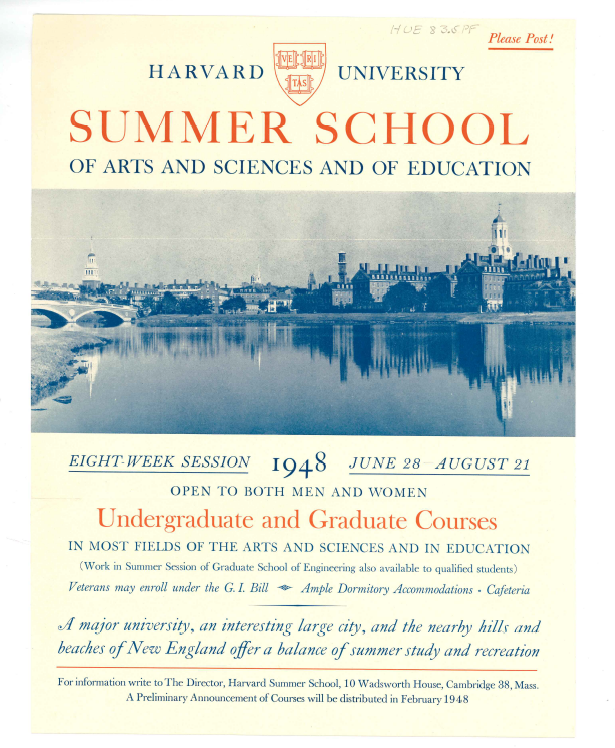On this page
One hundred fifty years ago, in the summer of 1871, Asa Gray, Professor of Natural History at Harvard University, launched the Harvard Summer School with a summer course on botany, which was taught in the new laboratory at the Harvard Botanic Garden. Courses in Geology, Chemistry, French, and German soon followed and expanded the curricular range of the Summer School.
Even in those early days, elements that define the Harvard Summer School today were evident: Classes were taught by both Harvard College faculty and visiting faculty. They included men and women, college-aged students from Harvard and elsewhere, as well as adult learners, many of whom were teachers. Then as now, students came from around the globe and across the United States to engage in intensive, short-term study, and, whenever possible, to live in the neighborhood surrounding Harvard College.
One hundred fifty years later, some things have changed at the Harvard Summer School. We now offer courses in a vast array of fields, from African and African American Studies to Women, Gender, and Sexuality, in a variety of modalities and in a variety of sessions. High School students have been welcomed into the Summer School for over 60 years now to study alongside students pursuing undergraduate and graduate degrees, as well as those who have enrolled in summer study for the sheer love of learning. What hasn’t changed is the commitment of the Harvard Summer School to make the advantages of Harvard University—outstanding faculty, world-class libraries, extensive museum collections, innovative classrooms and laboratories—available and accessible to students from around the world.
Please join us for a tour of the past 150 years!
– Sandra Naddaff, dean of Harvard Summer School






